Interactive art installation with sensors
The Hacking Paris 2020 show
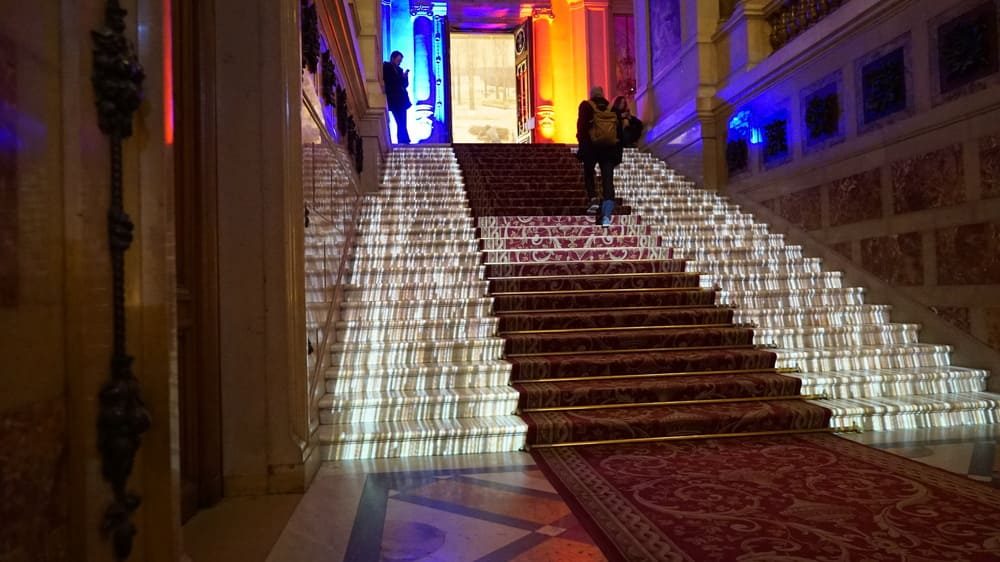
The scene takes place in Paris before the global lockdown due to COVID-19, at a trade show called “Hacking Paris 2020“. It’s a massive show gathering 3500 participants from various backgrounds: startups, experts, investors, major French and foreign corporates. The purpose is to highlight innovation on a broad scope with a special focus on innovative approaches to preserving our resources and retro-innovation. This day is punctuated by several highlights such as meets ups, demos, workshops, and showcases. In order to immerse visitors in the universe of the show, the organizers asked the HeavyM team to create an impressive visual installation at the entrance. Quickly, the idea of proposing an interactive art installation based on projection mapping appears obvious.
Interactive art to impress visitors
Concept of the installation
For the organizers, the brief was clear: Impress and immerse the visitors as soon as they arrived at the show site. And of course “Sublimate these majestic stairs, typical of the architecture of the building. It had to be memorable!”.
On our side, to fully immerse the visitor, we had to put him at the heart of the video mapping installation. And, nothing better than proposing an interactive artwork to do it! To go further, we wanted to offer the visitors the possibility to play with the installation. Which reinforces the idea of making it interactive. Our choice turned to tracking cameras to detect the presence of the visitor and thus display interactive visuals according to his movements.
Here is the specific scenario we built:
- If there are no visitors: the installation is paused and no visuals are projected.
- When a visitor approaches the stairs: The video mapping starts and a digital cascade spreads from top to bottom on the side of the stairs.
- When the visitor goes up/down the stairs: The central part of the staircase lights up. The steps come alive, depending on the movement, and follow the path of the people.
- The system works with several people at the same time on the stairs.
How did we set up this interactive video mapping?
Here the equipment we used:
- A computer with the HeavyM Live software.
- A WU630 Optoma projector. The projector is no longer available. New model ZU606e here.
- A tracking camera ZED 1.0: https://www.stereolabs.com/
- A custom program we develop to make the link between HeavyM and the ZED camera
Step 1 - Installation of the hardware
We installed the Optoma projector high up and in front of the stairs, about 20 meters away. We used a standard lens. If you have any questions about projectors and how to choose them please take a look at our specific tutorial.
Then, the projector is connected in HDMI to a Windows desktop computer. Moreover, the specifications are Intel I7 4Ghz / 32Gb RAM / Nvidia GTX 1080. We also installed the ZED camera on one side of the stairs using a USB cable.
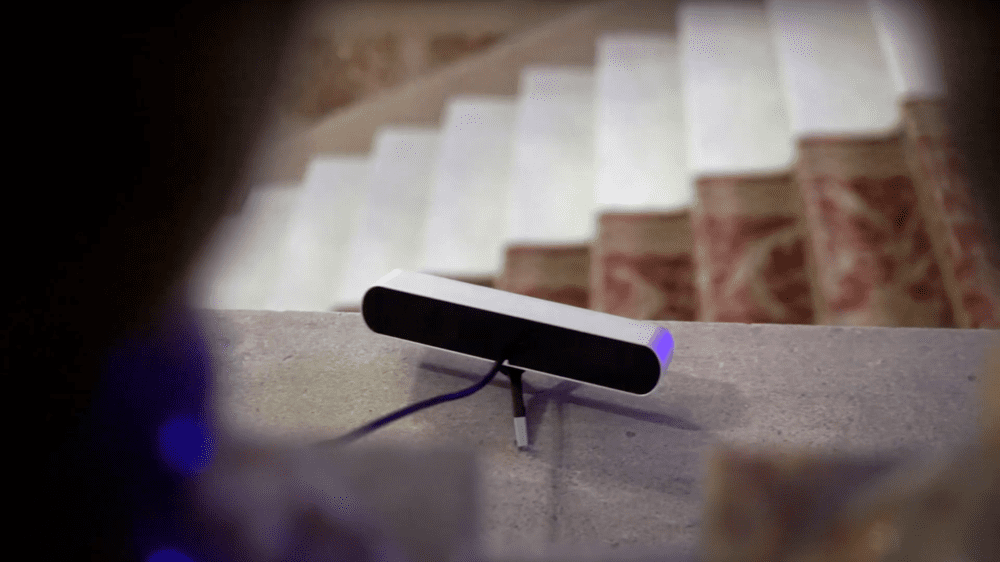
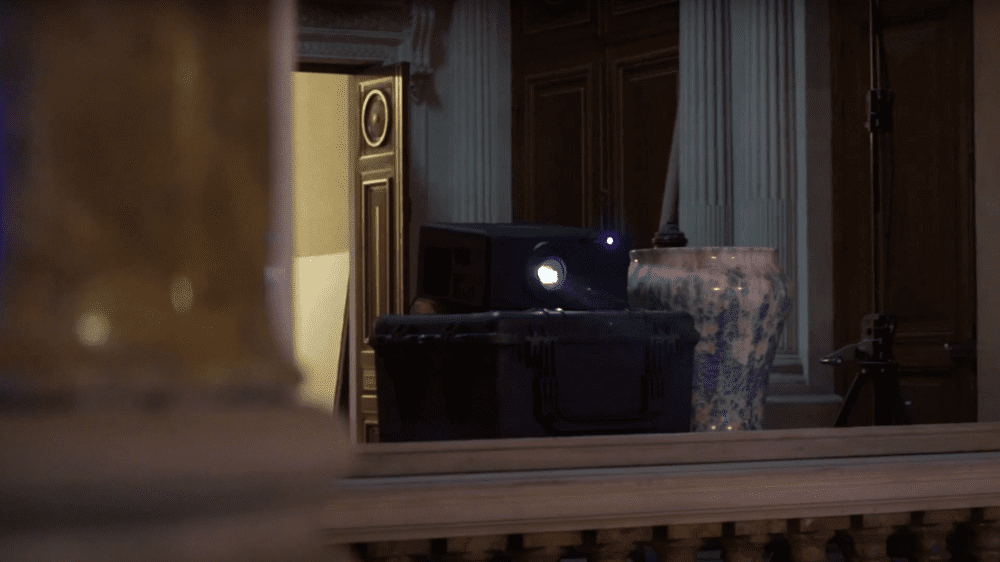
Step 2 - Mapping of the stairs
Here, with HeavyM, no difficulty at all: the mapping is fast and simple. We just created 2 big rectangles for the sides of the stairs. And each step is mapped individually. There are less than 30 shapes in the project.
Step 3 - Create the magic
The bulk of the work was to make HeavyM and the ZED camera work together. This stereo camera has two “eyes” that give a detailed 3D view of the scene. This depth is obtained by comparing the movements of the pixels captured between the right and left images. By the way, the camera works perfectly up to 20m and guarantees an FPS of 30Hz in Full HD resolution. That was enough of our needs.
The application of the ZED allows sending the tracked information thanks to the OSC protocol. We have therefore linked this information with the shapes created in HeavyM using OSC.
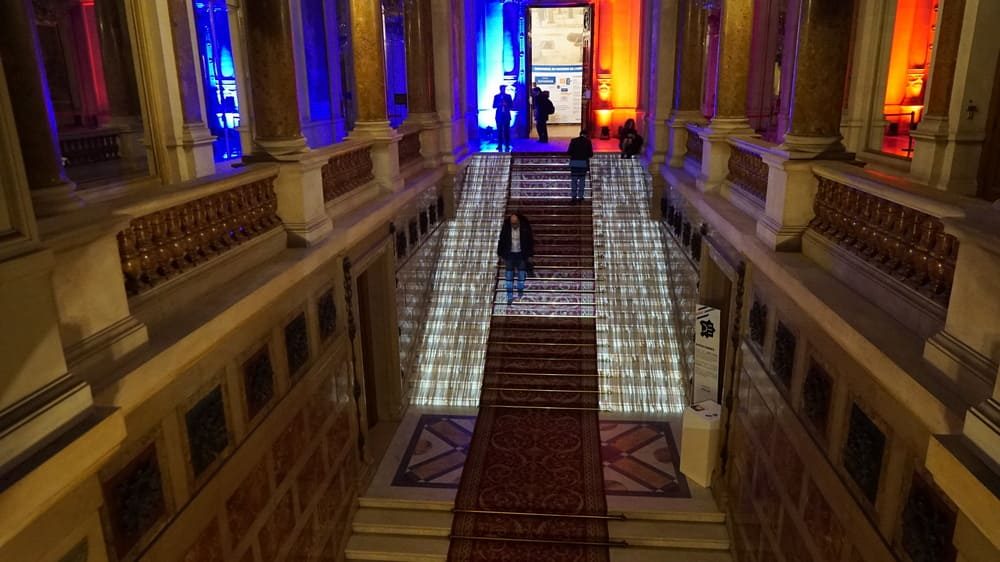
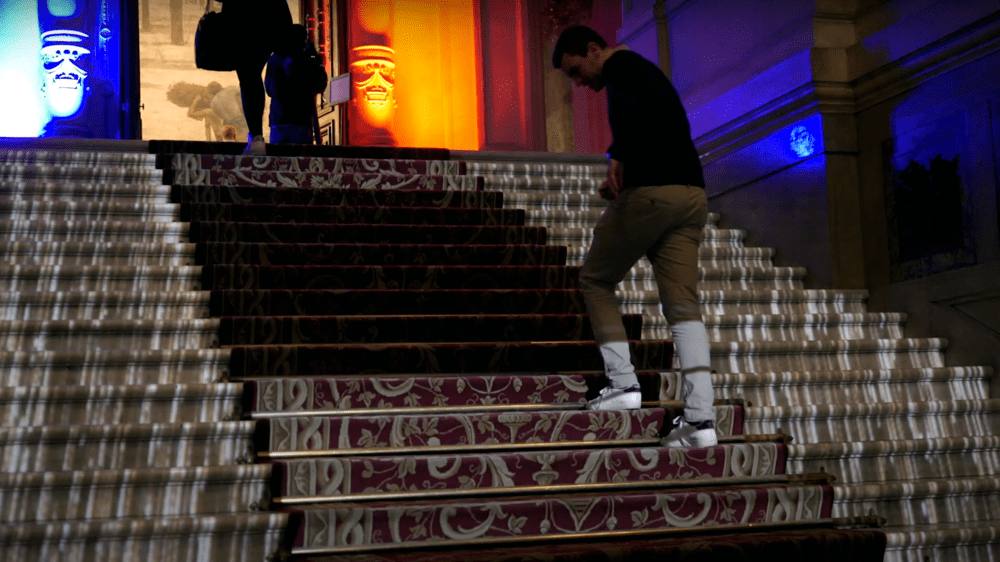
Visitors appreciated this beautiful interactive art installation
The installation was a huge success. The smiles and amazement of the participants speak volumes. As soon as the mapping started, their first reflex: Grab their phone to take photos and videos. The sharing on social networks made the organizers happy, and they didn’t expect so much! We are also happy because the visitors played the game by participating in the interactive part. Many were having fun going up and down several times to test the robustness of the system and it was perfect every time!
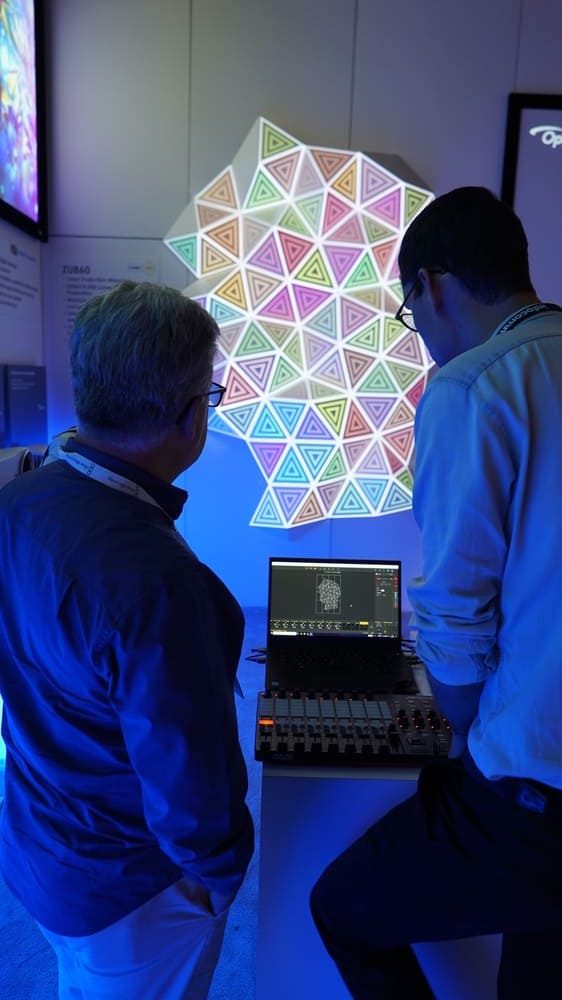
HeavyM Live: the best fellow for interactive mapping projects
HeavyM will allow you to create and easily set up video mapping projects for different types of events, especially for interactive ones.
HeavyM Live has a module for synchronization with live music. In 1 click, your animations adapt automatically to the music without complex parameterization. You get a perfect sound/image coherence without effort.
Moreover, HeavyM is compatible with MIDI and OSC protocols. MIDI controllers and touch devices, such as tablets, for example, can control the software. It is then possible to imagine installations where the audience acts on the mapping via these interfaces to create engagement.
If you have any questions, please feel free to contact our team of experts by chat or email here:

